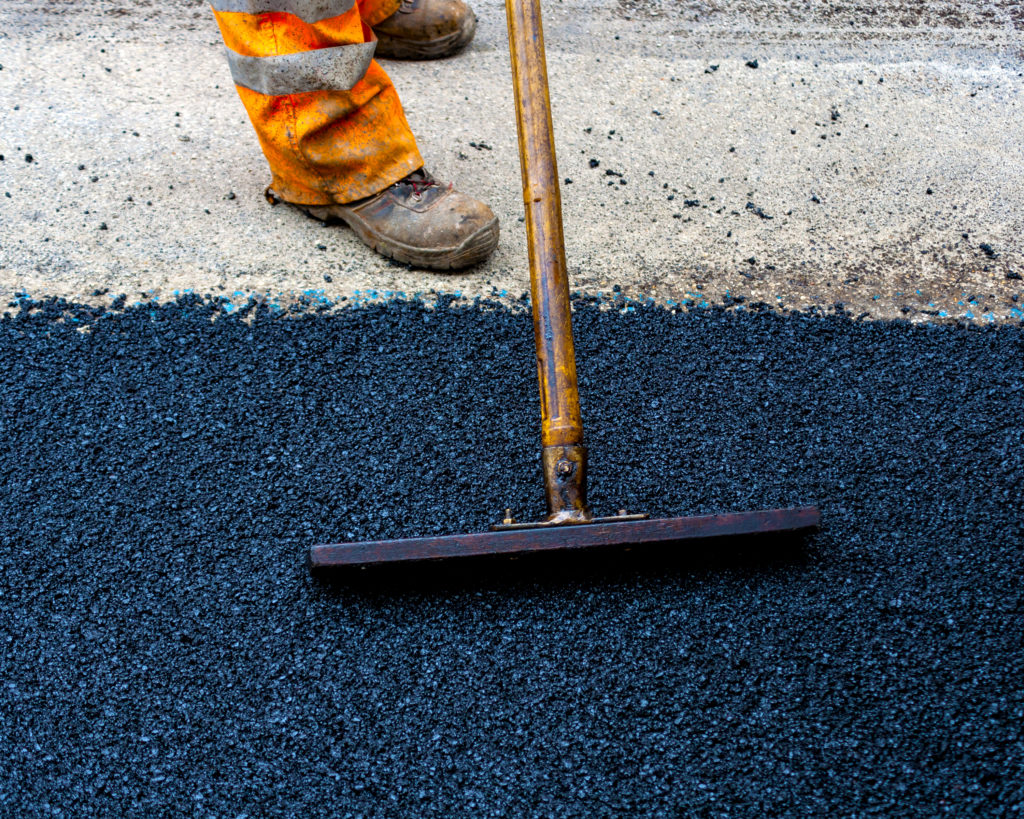Hot Mix Asphalt Paving: Redefining Industrial Home Landscapes
Hot Mix Asphalt Paving: Redefining Industrial Home Landscapes
Blog Article
Opening the Keys of Warm Mix Asphalt Technology
Exploring the depths of hot mix asphalt innovation uncovers a world where exact formulations and meticulous procedures merge to form our roadways and framework. The combination of binders, aggregates, and fillers isn't just a building and construction job yet a critical orchestration of longevity and performance. As we peer right into the complex dance of components, a tapestry of resilience and sustainability unravels. Yet what exists below this surface of asphaltic proficiency, and what keys wait to be revealed in the realm of leading advancements?
Significance of Warm Mix Asphalt
Hot Mix Asphalt plays a crucial function in modern facilities advancement as a result of its longevity and cost-effectiveness. As the most generally utilized leading material for roadways, freeways, and vehicle parking lots, Hot Mix Asphalt uses a range of advantages that contribute to its relevance in building projects. One crucial advantage is its capability to hold up against rush hour lots and severe climate condition, offering a resilient and dependable surface for transportation networks. In Addition, Warm Mix Asphalt is cost-effective in both preliminary building and long-lasting upkeep, making it a recommended choice for numerous facilities jobs.
The toughness of Hot Mix Asphalt stems from its make-up, which consists of aggregates, binder, and filler products that are very carefully selected and blended to satisfy specific performance requirements. On the whole, the significance of Warm Mix Asphalt in facilities development can not be underrated, as it continues to be a keystone of modern building practices.
Elements of Asphalt Mixes
The composition of asphalt blends contains meticulously selected accumulations, binder, and filler materials that are vital for achieving particular efficiency requirements. Accumulations are the primary element of asphalt blends, offering toughness and stability. These accumulations can be all-natural, such as crushed rock or crushed rock, or synthetic, like recycled materials from old sidewalks. The binder, generally asphalt or asphalt concrete, holds the aggregates together and gives adaptability and sturdiness to the mix. The option of the binder is important as it straight affects the mix's performance in different climate problems. Fillers, such as hydrated lime or Rose city concrete, are used to enhance the mix's workability and aging resistance. Angled Parking.
The mix and percentage of these parts play a significant role in figuring out the top quality and efficiency of the asphalt mix. Designers meticulously design the mix to meet specific requirements, considering factors like traffic volume, climate conditions, and pavement lifespan. Correct option and harmonizing of accumulations, binder, and fillers are necessary for producing long lasting, durable asphalt pavements.
Combining and Manufacturing Methods

As soon as the accumulations are picked, the binder, typically asphalt cement, is added to bind the materials together. The binder's high quality and quantity considerably affect the mix's stamina, versatility, and resistance to ecological variables. In addition, fillers like moisturized lime or Portland cement may be included to boost certain attributes of the asphalt mix, such as its workability or wetness resistance.
During manufacturing, the accumulations and binder are heated up, usually between 250-325 ° F(121-163 ° C ), to facilitate blending and make sure appropriate covering of the aggregates. The blending process must be thorough to attain a homogeneous blend that promotes the desired efficiency qualities of the asphalt. Various strategies, such as batch blending or drum blending, are employed to attain high-quality and regular asphalt mixes for building and construction jobs.
Factors Influencing Asphalt Performance
Aspects affecting asphalt efficiency encompass a variety of variables that impact the sturdiness, long life, and overall high quality of asphalt sidewalks. One vital factor is her latest blog the high quality of products made use of in the asphalt mix.

Ecological problems likewise influence asphalt efficiency. Temperature variants, moisture seepage, and traffic tons can all influence the structural honesty of the pavement. Style factors to consider, such as pavement density and drainage, are necessary in ensuring the long-lasting efficiency of the asphalt pavement. By very carefully taking into consideration these elements, service providers and engineers can enhance asphalt efficiency and boost the life span of pavements.
Lasting Practices in Asphalt Modern Technology

Furthermore, the advancement of warm-mix asphalt (WMA) innovations has gained grip recently. WMA permits the production and positioning of asphalt blends at reduced temperatures contrasted to conventional hot-mix asphalt, resulting in lowered power usage and greenhouse gas emissions. The usage of porous asphalt blends can help minimize stormwater runoff concerns by enabling water to infiltrate through the pavement and into the ground, promoting natural water filtration and reenergize processes. By executing these lasting practices, the asphalt sector can add to building a more durable and eco pleasant framework network.
Verdict
In conclusion, hot mix asphalt technology plays a critical role in contemporary framework development because of its longevity and cost-effectiveness. By carefully stabilizing elements, employing proper mixing strategies, and considering numerous factors, engineers can create premium check this asphalt blends that stand up to heavy website traffic loads and rough climate condition. Accepting sustainable techniques, such as making use of warm-mix innovations and recycled products, better boosts the environmental friendliness of asphalt innovation.
Blending and manufacturing techniques in hot mix asphalt modern technology involve the exact combination and processing of aggregates, binder, and fillers to develop a long lasting and high-performance asphalt mix.Elements influencing asphalt performance encompass a variety of variables that influence the resilience, longevity, and general high quality of asphalt Discover More Here sidewalks. Sustainable methods in asphalt technology encompass numerous campaigns intended at lowering the ecological influence of asphalt manufacturing and paving processes. By incorporating reclaimed asphalt pavement (RAP) and recycled asphalt tiles (RAS) into new asphalt blends, the sector can significantly decrease the consumption of raw materials and energy, while likewise lowering land fill waste.
WMA permits for the manufacturing and placement of asphalt blends at reduced temperature levels compared to conventional hot-mix asphalt, resulting in decreased energy intake and greenhouse gas exhausts.
Report this page